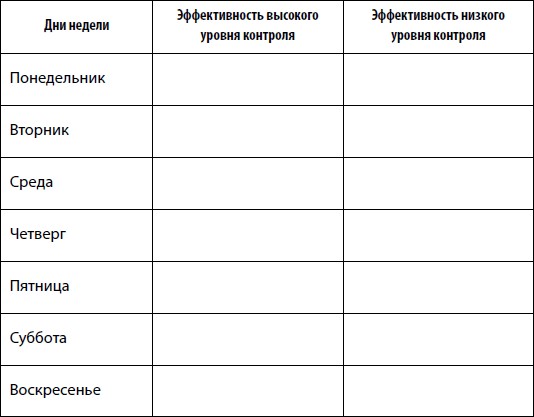S., and K. A. Phillips. 2014. “Do Obsessions and Compulsions Play a Role in Social Anxiety Disorder?”
Harvard Review of Psychiatry 22 (1): 55–58.
9. Borkovec, T. D., L. Wilkinson, R. Folensbee, and C. Lerman. 1983. “Stimulus Control Applications to the Treatment of Worry.” Behaviour Research and Therapy 21 (3): 247–51.
10. Cartwright-Hatton, S., and A. Wells. 1997. “Beliefs About Worry and Intrusions: The Meta-Cognitions Questionnaires and Its Correlates.” Journal of Anxiety Disorders 11 (3): 279–96.
11. Chancellor, J., K. Layous, and S. Lyubomirsky. 2015. “Recalling Positive Events at Work Makes Employees Feel Happier, Move More, But Interact Less: A 6-Week Randomized Controlled Intervention at a Japanese Workplace.”Journal of Happiness Studies 16 (4): 871–87.
12. Christoff, K. 2012. “Undirected Thought: Neural Determinants and Correlates.” Brain Research 1428: 51–59.
13. Clark, D. A. 2004. Cognitive Behavioral Therapy for OCD. New York: Guilford Press.
14. Clark, D.A., and A. T. Beck. 2012. The Anxiety and Worry Workbook: The Cognitive Behavioral Solution. New York: Guilford Press.
15. Clark, D. A., A. T. Beck, and B. Alford. 1999. Scientific Foundations of Cognitive Theory and Therapy of Depression. New York: John Wiley and Sons.
16. Clark, D. A., C. Purdon, and E. S. Byers. 2000. “Appraisal and Control of Sexual and Non-Sexual Intrusive Thoughts in University Students.” Behaviour Research and Therapy 38: 439–455.
17. Clark, D. A., and S. Rhyno. 2005. “Unwanted Intrusive Thoughts in Nonclinical Individuals: Implications for Clinical Disorders.” In Intrusive Thoughts in Clinical Disorders: Theory, Research and Treatment, edited by David A. Clark. New York: Guilford Press.
18. Conway, M., A. Howell, and C. Giannopoulas. 1991. “Dysphoria and Thought Suppression.” Cognitive Therapy and Research 15 (2): 153–66.
19. Cummins, R. A., and H. Nistico. 2002. “Maintaining Life Satisfaction: The Role of Positive Cognitive Bias.”Journal of Happiness Studies 3 (1): 37–69.
20. Diener, E. 2000. “Subjective Well-Being: The Science of Happiness and a Proposal for a National Index.” The American Psychologist 55 (1): 34–43.
21. Diener, E., R. E. Lucas, and C. N. Scollon. 2006. “Beyond the Hedonic Treadmill: Revising the Adaptation Theory of Well-Being.” The American Psychologist 61 (4): 305–14.
22. Diener, E., E. M. Suh, R. E. Lucas, and H. L. Smith. 1999. “Subjective Well-Being: Three Decades of Progress.” Psychological Bulletin 125 (2): 276–302.
23. Dixon, M. L., K. C. Fox, and K. Christoff. 2014. “A Framework for Understanding the Relationship Between Externally and Internally Directed Cognition.” Neuropsychologia 62: 321–30.
24. Edwards, S., and M. Dickerson. 1987. “On the Similarity of Positive and Negative Intrusions.” Behaviour Research and Therapy 25 (3): 207–11.
25. Emmons, R. A., and M. E. McCullough. 2003. “Counting Blessings Versus Burdens: An Experimental Investigation of Gratitude and Subjective Well-Being in Daily life.”Journal of Personality and Social Psychology 84 (2): 377–89.
26. Fava, G. A., and L. Mangelli. 2001. “Assessment of Subclinical Symptoms and Psychological Well-Being in Depression.” European Archives of Clinical Neuroscience 251 (Suppl. 2): 1147–1152.
27. Fredrickson, B. L., and M. F. Losada. 2005. “Positive Affect and the Complex Dynamics of Human Flourishing.” The American Psychologist 60 (7): 678–86.
28. Freeston, M., R. Ladouceur, M. Provencher, and F. Blais. 1995. “Strategies Used with Intrusive Thoughts: Context, Appraisal, Mood, and Efficacy.” Journal of Anxiety Disorders 9 (3): 201–15.
29. Greenberger, D., and C. A. Padesky. 2016. Mind over Mood: Change How You Feel by Changing the Way You Think. 2nd ed. New York: Guilford Press.
30. Halvorsen, M., R. Hagen, O. Hjemdal, M. Eriksen, Å Sørli, K. Waterloo, M. Eisemann, and C. Wang. 2015. “Metacognitions and Thought Control Strategies in Unipolar Major Depression: A Comparison of Currently Depressed, Previously Depressed, and Never-Depressed Individuals.” Cognitive Therapy and Research 39 (1): 31–40.
31. Hayes, S. C., K. D. Strosahl, and K. G. Wilson. 2011. Acceptance and Commitment Therapy: The Process and Practice of Mindful Change. 2nd ed. New York: Guilford Press.
32. Janeck, A. S., J. E. Calamari, B. C. Riemann, and S. K. Heffelfinger. 2003. “Too Much Thinking About Thinking?: Metacognitive Differences in Obsessive-Compulsive Disorder.”Journal of Anxiety Disorders 17 (2): 181–95.
33. Kessler, R. C., W. T. Chiu, O. Demler, and E. E. Walters. 2005. “Prevalence, Severity, and Comorbidity of Twelve-Month DSM-IV Disorders in the National Comorbidity Survey Replication (NCS-R).” Archives of General Psychiatry 62 (6): 617–27.
34. Killingsworth, M. A., and D. T. Gilbert. 2010. “A Wandering Mind Is an Unhappy Mind.” Science 330 (6006): 932.
35. Koole, S. L., and A. van Knippenberg. 2007. “Controlling Your Mind Without Ironic Consequences: Self-Affirmation Eliminates Rebound Effects After Thought Suppression.”Journal of Experimental Social Psychology 43 (4): 671–77.
36. Lambert, N. M., S. M. Graham, and F. D. Fincham. 2009. “A Prototype Analysis of Gratitude: Varieties of Gratitude Experiences.” Personality and Social Psychology Bulletin 35 (9): 1193–207.
37. Leahy, R. L., D. Tirch, and L. A. Napolitano. 2011. Emotion Regulation in Psychotherapy: A Practitioner’s Guide. New York: Guilford Press.
38. Lyubomirsky, S., L. King, and E. Diener. 2005. “The Benefits of Frequent Positive Affect: Does Happiness Lead to Success?” Psychological Bulletin 131 (6): 803–55.
39. Mischel, W. 2014. The Marshmallow Test: Why Self-Control Is the Engine of Success. New York: Little Brown and Company.
40. Munoz, E., M. J. Sliwinski, J. M. Smyth, D. M. Almeida, and H. King. 2013. “Intrusive Thoughts Mediate the Association Between Neuroticism and Cognitive Performance.” Personality and Individual Differences 55 (8): 898–903.
41. Najmi, S., B. C. Riemann, and D. M. Wegner, 2009. “Managing Unwanted Intrusive Thoughts in Obsessive-Compulsive Disorder: Relative Effectiveness of Suppression, Focused Distraction, and Acceptance.” Behaviour Research and Therapy 47 (6): 494–503.
42. Purdon, C., and D. A. Clark. 1994. “Obsessive Intrusive Thoughts in Nonclinical Subjects: Part II. Cognitive Appraisal, Emotional Response and Thought Control Strategies.” Behaviour Research and Therapy 32 (4): 403–10.
43. Rachman, S. 1981. “Part I. Unwanted Intrusive Cognitions.” Advances in Behaviour Research and Therapy 3 (3): 89–99.
44. Rachman, S. 2003. The Treatment of Obsessions. Oxford: Oxford University Press.
45. Radomsky, A. S., G. M. Alcolado, J. S. Abramowitz, P. Alonso, A. Belloch, M. Bouvard, D. A. Clark, et al. 2014. “Part 1—You Can Run But You Can’t Hide: Intrusive Thoughts on Six Continents.” Journal of Obsessive-Compulsive and Related Disorders 3 (3): 269–79.
46. Rassin, E. 2005. Thought Suppression. Amsterdam: Elsevier.
47. Roemer, L., and T. D. Borkovec. 1993. “Worry: Unwanted Cognitive Activity That Controls Unwanted Somatic





